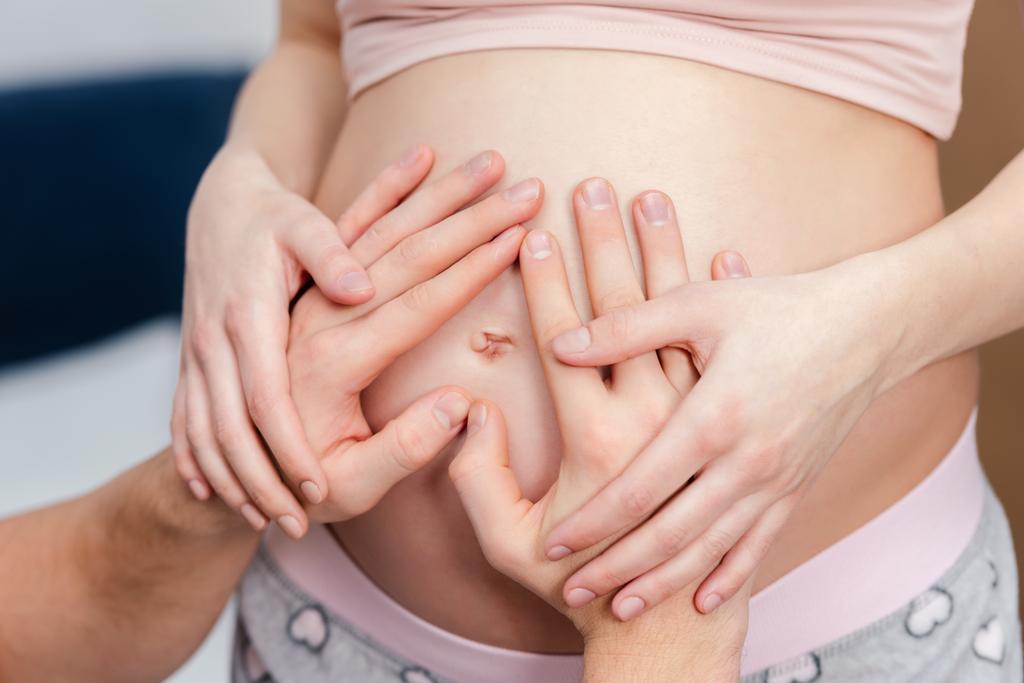Best Times to Get Pregnant: Knowing When You Can! Ovulation Days
Embarking on the journey of becoming a parent is an exciting adventure filled with hopes, dreams, and anticipation. One essential aspect of this journey is understanding the best time to get pregnant. In this article, we’ll explore the simple and important factors that can help you know when you’re most likely to conceive.
Understanding Ovulation:
At the heart of knowing when to try for a baby is understanding a process called ovulation. Ovulation is when an egg is released from a woman’s ovary, and it usually happens in the middle of her menstrual cycle. For many women, the average cycle is around 28 days, but it’s okay if yours is a bit shorter or longer. The key is to figure out when you ovulate in your unique cycle.
Finding Your Menstrual Cycle:
To understand your cycle, you’ll want to start by keeping track of your periods. Your menstrual cycle begins on the first day of your period. If you have a regular cycle, counting days can help you estimate when you might ovulate. For instance, if you have a 28-day cycle, ovulation might occur around day 14.
Noticing Changes in Your Body:
Our bodies often give us signs when ovulation is approaching. One noticeable change is in the cervical mucus, which can become clear, slippery, and stretchy—a bit like egg whites. Paying attention to these changes can give you a clue that your body is getting ready for ovulation.
Another sign is a slight increase in basal body temperature (BBT), which is your body’s temperature at rest. Using a basal thermometer each morning before getting out of bed can help you track this subtle change. After ovulation, your BBT might rise slightly and stay elevated until your next period.
Ovulation Predictor Kits (OPKs):
If you prefer a more direct way of predicting ovulation, you can use ovulation predictor kits (OPKs). These kits are available at most drugstores, and they work by detecting the surge in luteinizing hormone (LH) that happens just before ovulation. When the test line on the kit is as dark or darker than the control line, it indicates that you’re likely to ovulate soon.
Determining Your Most Fertile Days:
Now that you know how to track your cycle and detect signs of ovulation, let’s discuss the best times to get pregnant. The fertile window is the period when conception is most likely to occur. It includes the days leading up to ovulation and the day of ovulation itself.
- Leading Up to Ovulation: Sperm can survive inside a woman’s body for several days, so having intercourse in the days leading up to ovulation gives the sperm time to meet the egg when it is released. If you have a regular 28-day cycle, this fertile window might start around day 10 or 11.
- Day of Ovulation: The day of ovulation is the peak of your fertility. If everything aligns, and sperm is waiting in the reproductive tract when the egg is released, this is when conception is most likely to happen. For a 28-day cycle, this might be around day 14.
- Post-Ovulation Days: While the chances of getting pregnant decrease after ovulation, it’s still possible to conceive for a short time. Some couples continue to have intercourse for a day or two after ovulation to cover all possibilities.
Timing Intercourse:
To make the most of your fertile window, aim to have intercourse every two to three days throughout your menstrual cycle. This approach ensures a steady supply of sperm and increases the chances of sperm being present when ovulation occurs.
Factors Affecting Conception:
While timing plays a crucial role, there are other factors that can influence your ability to conceive:
- Age: Fertility tends to decline with age, especially for women. It’s generally easier to conceive in the early twenties and becomes more challenging as you get older.
- Lifestyle Factors: Living a healthy lifestyle can positively impact fertility. Eating a balanced diet, getting regular exercise, limiting alcohol intake, and avoiding smoking contribute to overall well-being.
- Health Conditions: Certain health conditions, such as polycystic ovary syndrome (PCOS) or endometriosis, can affect fertility. Seeking advice from healthcare professionals if you have concerns is a good idea.
- Male Factors: It’s essential to remember that male fertility is also crucial. Factors such as sperm count, motility, and morphology can impact fertility. Open communication and seeking guidance if needed contribute to a collaborative approach.
When to Seek Professional Advice:
While many couples successfully conceive by understanding and optimizing the timing of intercourse, some may encounter challenges. It’s advisable to consult with healthcare professionals if:
- No Conception After a Year: If you’ve been actively trying to conceive for a year without success, seeking advice from healthcare providers is recommended. For women over 35, seeking advice after six months is advisable.
- Irregular Menstrual Cycles: Irregular menstrual cycles can make pinpointing ovulation more challenging. If your cycles are consistently irregular, seeking advice is a good idea.
- Known Health Conditions: If you or your partner has known health conditions that may impact fertility, consulting with healthcare providers before attempting to conceive is wise.
Conclusion:
Knowing the best times to get pregnant involves understanding your menstrual cycle, recognizing signs of ovulation, and strategically timing sexual activity. While the process may seem complex, it’s important to approach it with patience and collaboration between partners.
Couples are encouraged to maintain open communication, support each other through the journey, and seek professional advice when needed. Remember that conception is a unique and individual process, and the key is to approach it with understanding, knowledge, and a shared commitment to building a family. By navigating the fertile window with care and intention, couples can increase their chances of welcoming a new life into their lives.












